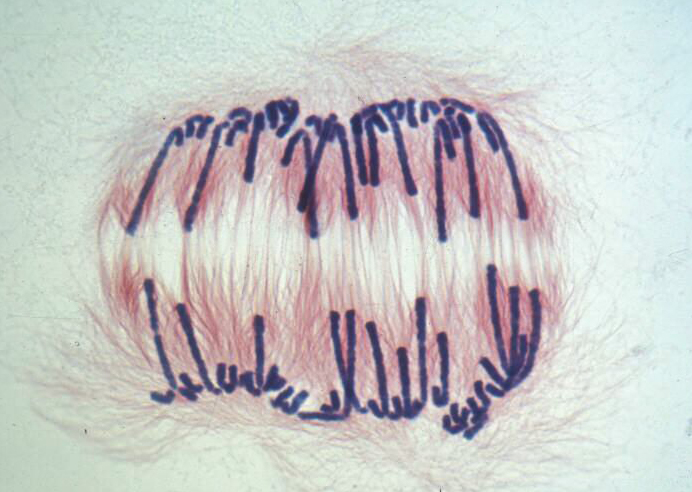![A new study reveals that the brain's ability to clear the main ingredient of Alzheimer's plaques (red) slows with age. The findings could help explain why risk of the disease increases with age. [John Cirrilto]](https://genengnews.com/wp-content/uploads/2018/08/1976922993204-1.jpg)
A new study reveals that the brain’s ability to clear the main ingredient of Alzheimer’s plaques (red) slows with age. The findings could help explain why risk of the disease increases with age. [John Cirrilto]
Since the advent of the microscope, watching cells divide has captured the attention and imagination of scientists across an array of disciplines. Initially, scientists wondered what they were observing—a diffuse mass of rod-like structures condensing in the center of cells that were suddenly enveloped by spindly tendrils pulling the rods back toward opposite ends, ultimately ending with two new cells.
Over the years since those first observations, researchers have come to learn a great deal about the molecular mechanisms that lie at the heart of cellular mitosis. Yet, how genetic information is protected and properly segregated during mitosis has eluded biologists for quite some time.
Now, researchers from The Wistar Institute have identified the interaction between proteins that are seemingly critical in organizing chromosomes for the safe and efficient transfer of genetic information onto newly formed cells. Identifying the protein relationships that are responsible for protecting chromosomes is a crucial step in learning more about some of the first disruptions of our genes, which can often result in diseases like cancer.
The findings from this study were published recently in Molecular Cell through an article entitled “Interaction between TBP and Condensin Drives the Organization and Faithful Segregation of Mitotic Chromosomes.”
The Wistar investigators focused on a protein complex within human cells known as condensin. This complex helps compresses more than 20,000 genes in the human genome into the nucleus of each cell. Recent studies found that condensin genes are heavily mutated in various cancers and that these mutations promote cancer-causing processes through the dysregulation of gene expression, as well as chromosomal instability.
“How condensin is able to assemble the specific structure of mitotic chromosomes and how this organization promotes segregation during mitosis are two significant questions that have faced those of us working in genome biology,” explained senior author on the current study Ken-ichi Noma, Ph.D., associate professor in Wistar's Gene Expression and Regulation program. “We believe this study provides a molecular basis for these important questions.”
Dr. Noma and his team identified that a subunit of condensin called Cnd2 binds directly to a protein called the TATA box-binding protein (TBP)—a general transcription factor required for all cells. The researchers found that when Cnd2 binds to TBP it recruits condensin onto a set of polymerase transcribed genes. This allows condensin to tether the genes to the centromeres so that when mitosis begins, genetic information remains protected and intact as the chromatin is split apart.
“This genome-organizing mechanism contributes to effective transmission of important genetic materials during mitosis,” Dr. Noma noted. “By gaining a better understanding of this essential process, we can now study the origins of diseases that arise when this phenomenon is disrupted.”


